*** DRAGON FRUIT ***
***** IN CALIFORNIA *****
***** AND ELSEWHERE. *****
____________________
CHAPTER 2 (pages 2 to 8)
Dragon Fruit in California
_______________________________
• Paul H. Thomson (1916-2008): the pioneer.
• Botanical species
(Paragraph based on Paul Thomson's book)
_____________________________
Page 2 / 8 of the article.
________________________________
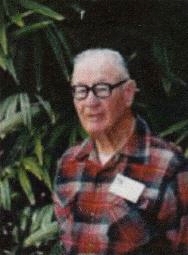
Paul H. Thomson (photo taken from his book)
© "Pitaya", book written by Paul Thomson, photo Leo Manuel.
Paul H. Thomson used botanical species of Hylocereus and created the first hybrids of Hylocereus in the United States.
The first works carried out by Paul Thomson are:
1- The cultivation in the San Diego region of Hylocereus botanical species brought back from neighbouring countries.
2-The creation of the first hybrids.
P. Thomson writes in his book:
All species are similar and difficult to distinguish botanically. There is a lot of confusion in the description of species. Flowers and fruits are often not described. Documentation on the genus is incomplete.
The identification is often confused; the current works (At the time of writing the book, editor's note) are still very incomplete with regard to the description of fruits and in particular the colour of the pulp.
All but one botanical species are self-sterile, but are suitable for cross-pollination.
• Botanical species
White pulp botanical species:
These are the fruits of Hylocereus undatus as well as that of Hylocereus megalanthus.
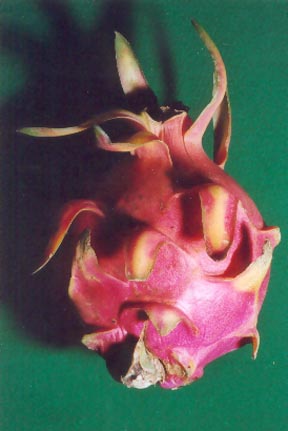
Fruit of Hylocereus undatus.
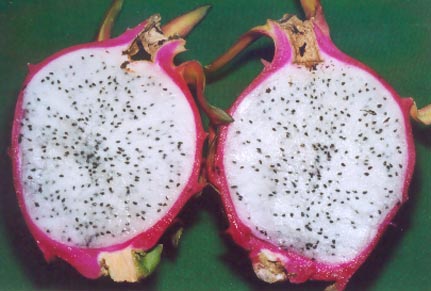
Sectional view of the previous fruit.

Fruit of Hylocereus megalanthus (formerly Selenicereus megalanthus).
Self-fertile clones of Hylocereus undatus (9 exactly) have been selected in Vietnam and introduced into the USA and entrusted to the California Rare Fruit Growers (CRFG).
There are also 5 self-fertile Hylocereus undatus clones from Mexico and 3 from Lower California selected by members of the CRFG.
In Vietnam, pollination is carried out by bats and sphingid butterflies (nocturnal moths). These agents transport pollen within the same flower (no pollination required from one flower to another).
In the United States, pollinating animals are bees.
Botanical species with fruits with red or pink pulp:
Red-pulped species often produce more tasty and sweet fruit.
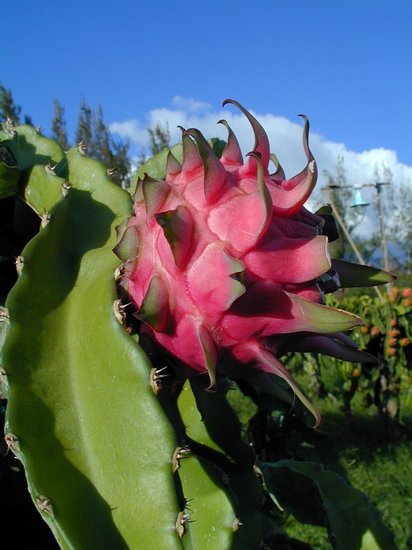
fruit of Hylocereus costaricensis (strong pink pulp).
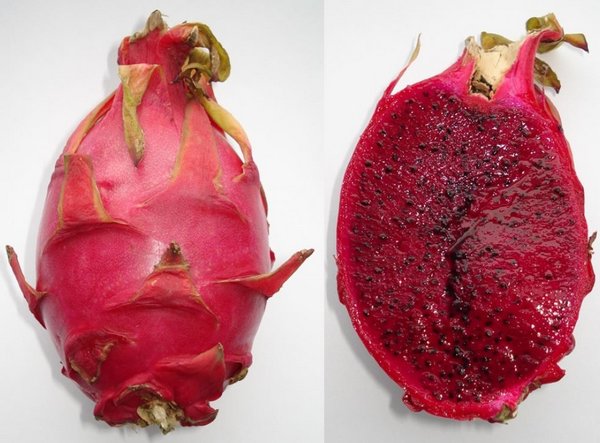
fruit of Hylocereus monacanthus
Some authors refer to H. polyrhizus as synonymous with H. monacanthus.
_et_H_costaricenis_(D)_leb_comp.jpg)
Left: H. purpusii, right: H. costaricensis
After these few botanical species, let's move on to Paul Thomson's hybrids.
___________________________________
BACK TO THE SUMMARY OF THE ARTICLE
_________________________________________